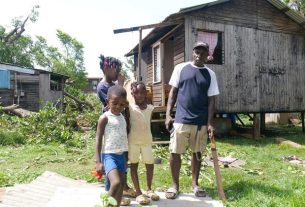|
Getting your Trinity Audio player ready...
|
In a landscape full of clear blue lakes and deep green forests, it is the old redbrick buildings that tell the story of Tampere’s industrial heritage. Former factories, which once housed machine and linen production, still dominate the architecture of this Finnish region.
Although the roar of industrial machinery has long died out, the “Tampere spirit”, as the locals call it, remains deeply rooted in the area.
“Tampere has a reputation for being innovative,” said Tanja Tyvimaa, senior specialist at the City of Tampere, the largest city in the region. “If there is a good reason to start a pilot and try out a new approach, we just do it.”
Circular region
It therefore comes as no surprise that the Tampere region is one of the 12 pilot regions selected to receive tailored support from circular economy experts as part of the EU’s Circular Cities and Regions Initiative (CCRI).
“
We can’t change the world on our own, but we can point it in the right direction.
Launched in October 2021, the CCRI is part of the EU’s broader effort to help cities use resources more efficiently and reduce waste. It brings together more than 140 cities, towns and regions across Europe to lead the shift toward a more circular and sustainable way of living.
This initiative is also a key part of the European Green Deal – the EU’s overarching plan to grow the economy while protecting the environment. Since local communities manage most of Europe’s resources, cities and regions play a crucial role in making this green vision a reality.
“We need to tackle this issue at the city and regional level,” said Tyvimaa, a specialist in sustainable housing and construction.
“If we ask private companies to focus on circularity, the public sector needs to lead by example. We can’t change the world on our own, but we can point it in the right direction.”
Waste-free construction
The main pillars of a circular economy could be described as reusing, repairing, refurbishing and recycling. Instead of constantly producing new goods as is done in the current linear economy, the system aims to reduce waste and extend the lifecycle of existing products.
The region of Tampere, with 23 municipalities including the city of Tampere itself, has already made significant strides toward a circular economy. A key focus of these efforts is one of the region’s largest industries: construction.
The construction sector is a significant contributor to global carbon emissions. In the EU, buildings account for nearly half of total energy consumption and generate over one third of the EU’s total waste.
The situation is no different in Finland, where the construction industry alone is responsible for 30 % of all CO₂ emissions, according to Karoliina Tuukkanen from Circular Pirkanmaa, a publicly funded development centre for the circular economy in the Tampere region.
In close collaboration with the Council of Tampere Region, Circular Pirkanmaa focuses on improving circular economy practices in the construction sector. This includes housing, infrastructure development and industrial material flows.
“We are aiming very high,” said Tuukkanen. “Our goal is to bring about systemic change. We need big changes to happen quickly to reduce our heavy reliance on natural resources.”
As Tuukkanen put it, Circular Pirkanmaa is looking for ways to embed circular economy principles in the municipalities’ plans and business strategies.
One key achievement is the development of new criteria for infrastructure construction, ensuring that circularity is now a core requirement in public tenders in Tampere.
“This is a big shift,” Tuukkanen said. “Public procurement involves significant spending and influence. By changing its rules, we can make a real impact.”
Old to new
The Tampere region is also actively promoting the reuse of materials from deconstructed buildings, including bricks and concrete. For instance, the cities of Nokia and Orivesi have each recovered and plan to reuse a combined total of 42 000 bricks in local construction projects.
Another notable example is the EU-funded ReCreate project, which focuses on the reuse of precast concrete for circular construction. Involving partners from Tampere and other regions in Finland, the Netherlands, Germany, Sweden and Croatia, the project team aims to deconstruct and reuse concrete elements from end-of-life buildings.
“These concrete elements weren’t originally designed for disassembly, but we have been quite successful so far,” said Satu Huuhka, a professor of sustainable renovation at Tampere University.
Replacing newly manufactured materials with reused ones offers significant environmental advantages. “The carbon footprint of reused elements is just 5 % of that of newly produced ones,” said Huuhka, who coordinates the ReCreate initiative.
“
Our goal is to bring about systemic change.
As part of their work, the ReCreate partners have carried out deconstruction and reuse pilots. This involves salvaging structural elements from actual end-of-life buildings and incorporating them into new construction, including a block of flats and an exhibition pavilion.
According to Huuhka, the process has proven technically viable and safe.
“These buildings weren’t decommissioned due to structural failures, but rather because of evolving urban and societal needs, which allows us to ensure the quality of the reused materials,” she said.
The ReCreate team was pleasantly surprised by how straightforward the deconstruction process turned out to be, Huuhka added. “In fact, some of our industrial partners have already begun applying our methods to commercial projects.”
Sharing knowledge
The next challenge is learning how to design buildings using reused products.
“Design and architecture will need to adapt because we’re working with existing elements that come with predefined dimensions, characteristics and load-bearing capacities,” said Huuhka.
To support this shift, the city of Tampere is developing guidelines for architects and embedding circular economy principles into its new climate neutral roadmap.
“Our hope is that in five years, circular economy practices will no longer be seen as exceptional – they’ll simply be a standard part of the construction process,” said Tyvimaa.
Creating knowledge and making it widely accessible is a crucial step in the green transition, she added. “The main challenge in implementing the circular economy is the lack of practical experience and know-how.”
This is where initiatives like the CCRI can make a real difference in helping Europe become more circular.
“The CCRI is crucial for knowledge-sharing and setting benchmarks,” said Tuukkanen. “Many of the practices developed here in Finland could be easily adapted elsewhere – and vice versa. It’s vital that we connect and learn from one another.”
Research in this article was funded by the EU’s Horizon Programme. The views of the interviewees don’t necessarily reflect those of the European Commission. If you liked this article, please consider sharing it on social media.



